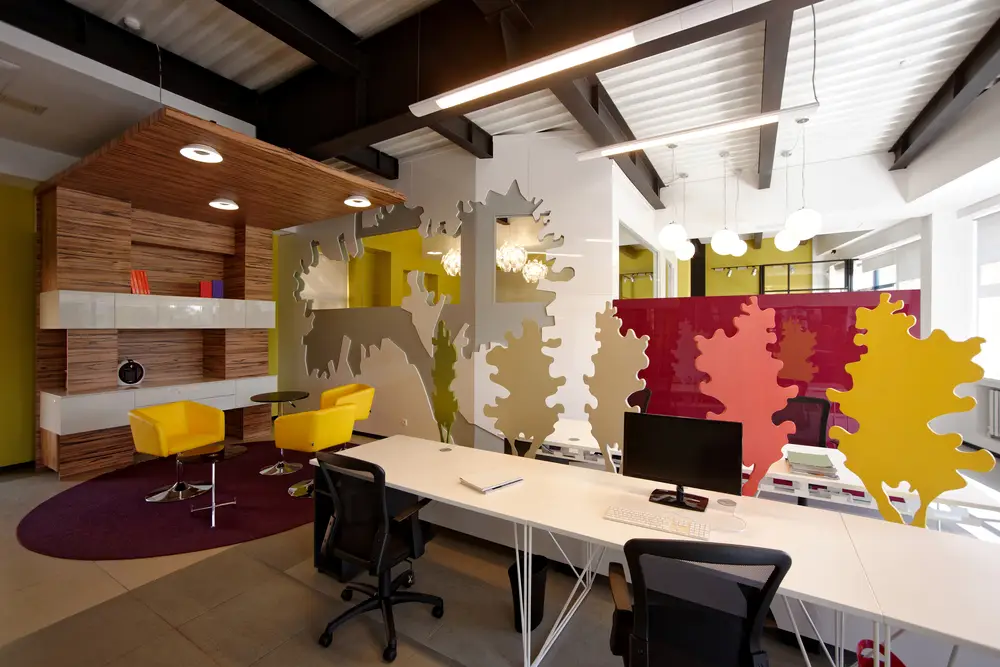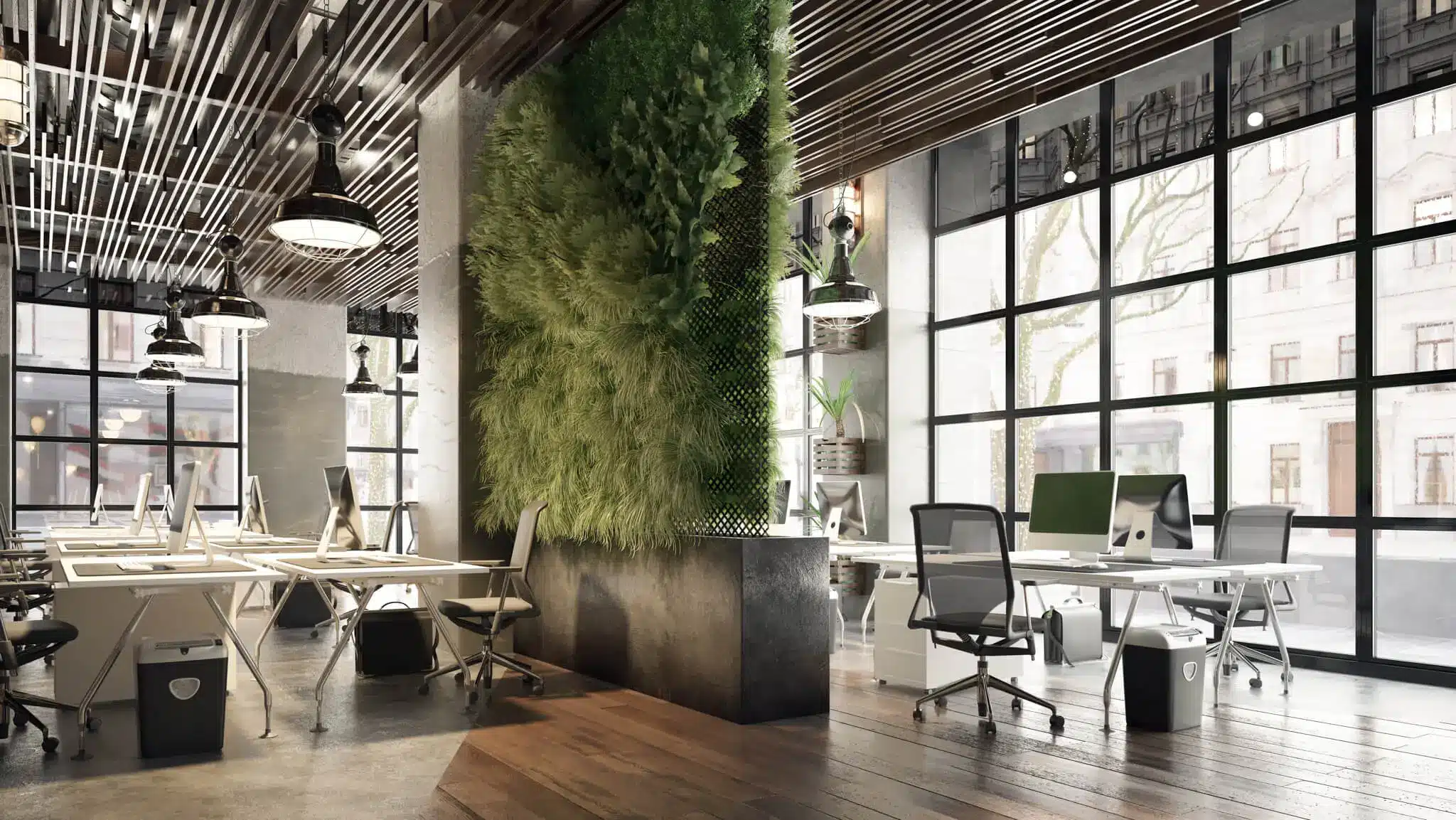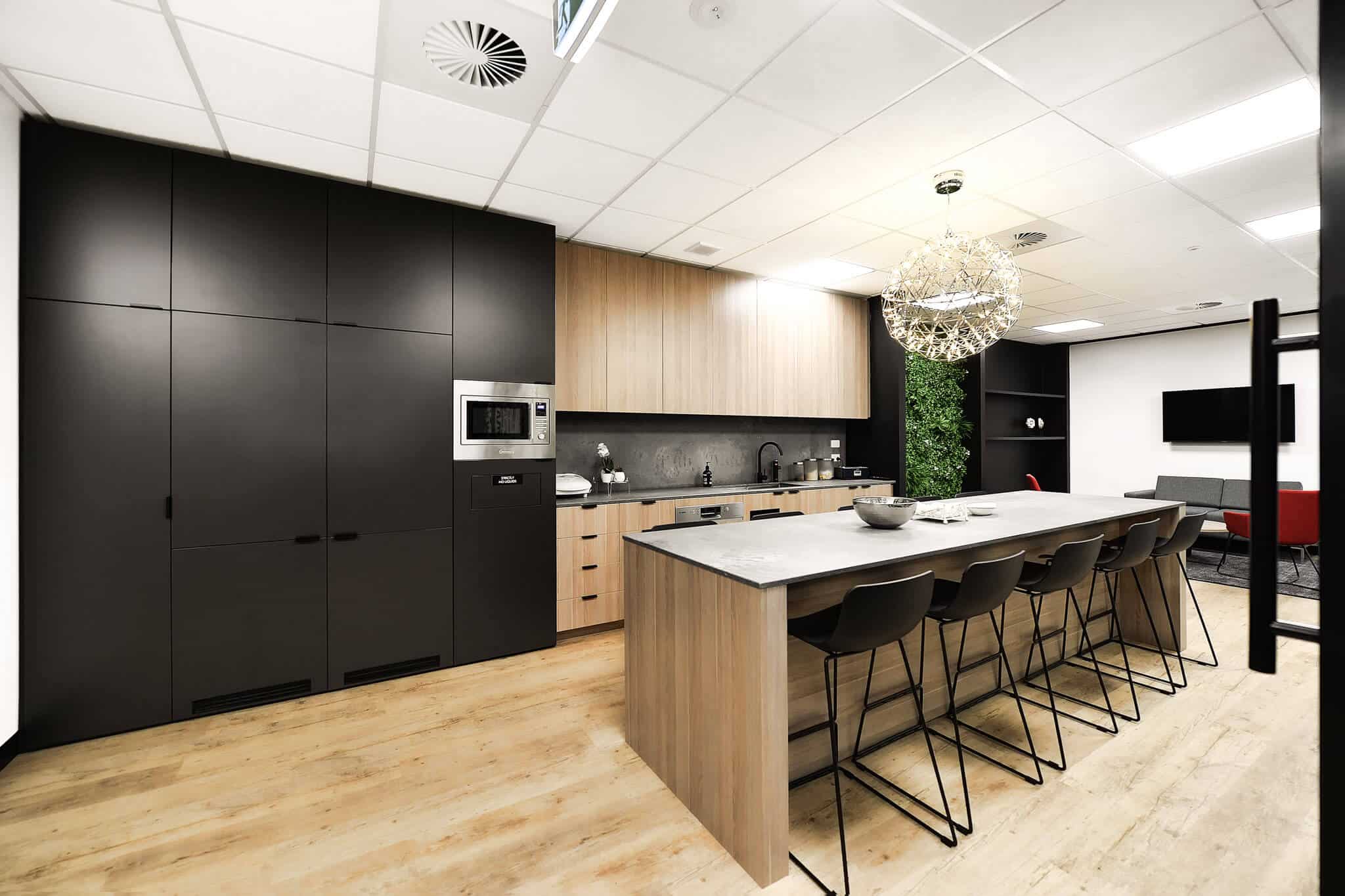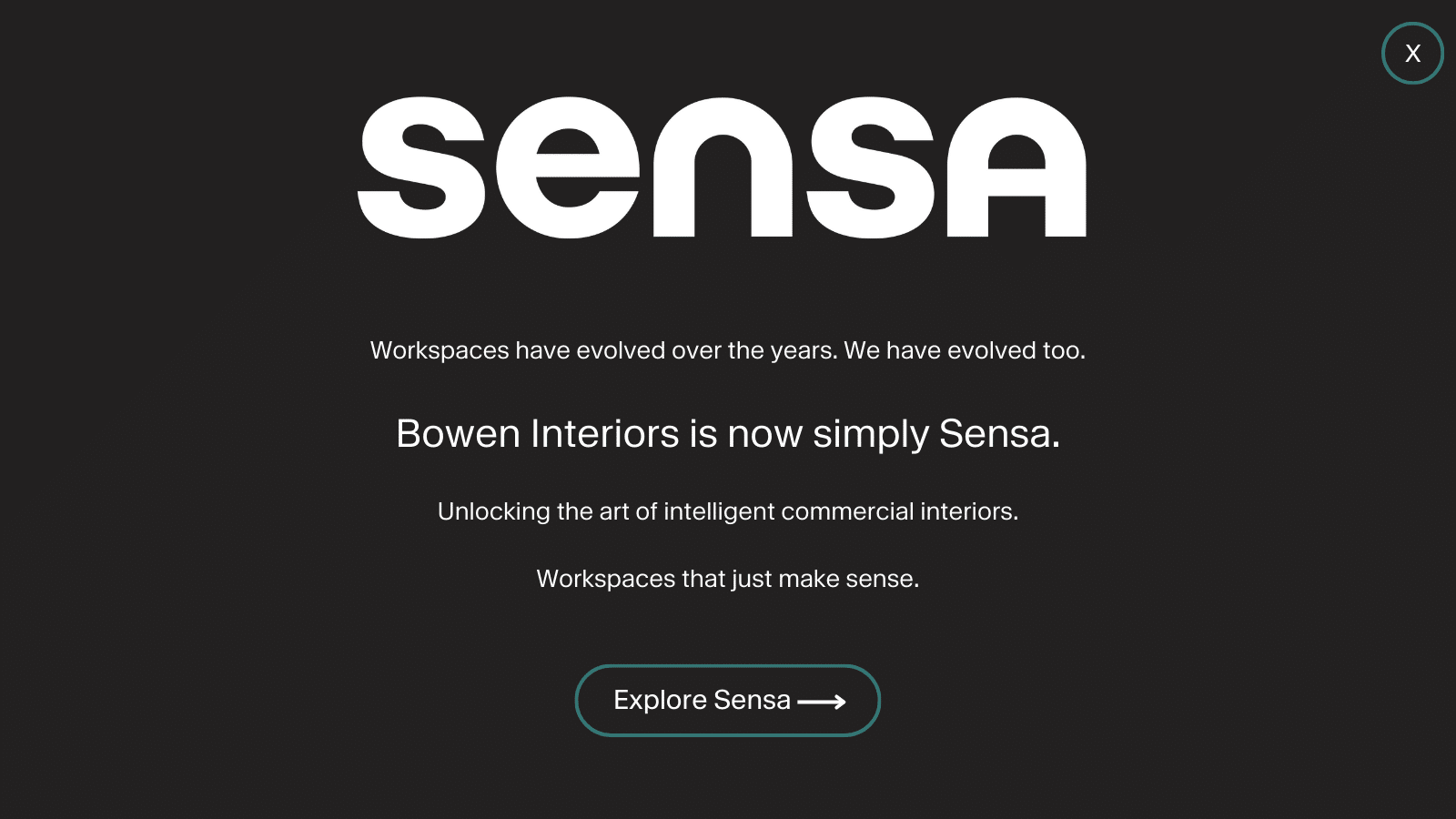In the relentless corporate landscape of 2023, Australian firms are recognising the rising need for adaptive workplaces. These dynamic environments offer flexibility, collaboration, and a focus on employee well-being.
Adaptable layouts spread and stuck after the pandemic, with the latest research from Statista showing how more than 80% of Australian companies offer part-time work as part of their new flexible arrangements, while more than 50% offer flexitime. We can understand why.
The employee-first motto is a much-needed balm for workers who, traditionally, have always been a distant second to profits. Yet, there’s reverse psychology at play, as more and more Australian businesses discover how profitable this employee-centric approach can be.
By embracing adaptive workplaces, organisations can get and stay agile, attract top talent, boost creativity, and optimise their resources. In this article, we’ll explore what an adaptive workplace is, the benefits it brings, and how to create one.
What is an adaptive workplace?
An adaptive workplace is a flexible and versatile environment that can easily accommodate changing needs and trends, and the type of fluid workforce that comes, goes, huddles, lounges, and gets down to the graft.
It’s designed to support a spectrum of workstyles, foster collaboration, and enhance employee Zen. From the physical layout to the technology infrastructure, an adaptive workplace morphs to the evolving demands of a more flexible and sustainable workforce in a contemporary business world.
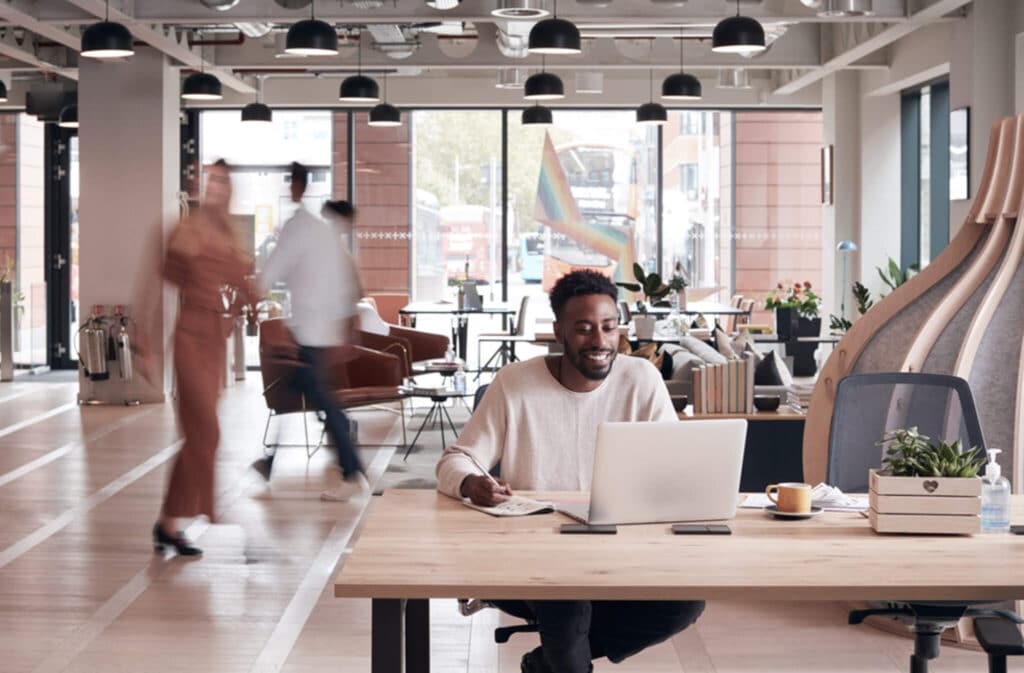
What are the benefits of embracing adaptive workplaces?
Changing workforce dynamics
The modern workforce is an amalgamation of different generations, cultures, people, and workstyles.
Adaptive workplaces cater to this diversity by providing a variety of options for individual work in a relaxed or formal posture, collaboration, and remote work, allowing employees to choose the environment that suits them best at the time.
Evolving technological landscape
Technology is instrumental in the contemporary workplace, and it’s constantly evolving. Adaptive workplaces integrate advanced tech and infrastructure solutions to support seamless connectivity, remote collaboration, and far more efficient workflows.
An accessible, open workplace with tactile features and room for cross-functional interaction means employees can collectively adapt to new tools and platforms together and without disruptions.
Boosting collaboration and creativity
Adaptive workplaces kindle collaboration by providing flexible meeting spaces, communal areas, and technology-enabled platforms. The interior office design should encourage spontaneous action and fluid movement from space to space.
The ability to change spaces and freely interact or withdraw fosters innovation, creativity, and knowledge-sharing among employees, leading to heightened productivity and keener problem-solving.
Attracting and retaining talent
Australian employees aren’t about to let local businesses get away with staying traditional. After all, Australian employees have just as high stakes in their own wellbeing and flexitime as American or European folk, for example.
Consequently, organisations that offer adaptive workplaces have a competitive edge in attracting and retaining top talent. However, there’s also very real data pointing to flexibility promoting workforce participation, employee satisfaction, innovation, creativity, and productivity.
The ability to accommodate diverse needs and provide a supportive work environment enhances employee joy and engagement. A staggering 83,2% of Australian workers have been shown to agree, according to Randstad’s latest Workmonitor report.
Cost efficiency and space optimisation
Besides worker satisfaction, adaptive workplaces are all about optimising space utilisation and resource allocation.
With flexible workstations, multifunctional areas, and agile policies, organisations can ultimately reduce real estate costs, maximise productivity, and adapt quickly to changing business requirements.
Agility and resilience
Adaptive workplaces enable organisations to respond swiftly to market shifts, industry trends, and unexpected disruptions.
By embracing flexibility and agility, forward-thinking organisations can navigate challenges, seize opportunities, and maintain a competitive edge in the hectic, fast-flowing waters of modern business.

How to create an adaptive workplace
Open and modular layout
Embrace an open floor plan with modular furniture that can be rearranged to accommodate different team sizes and activities. This promotes collaboration, flexibility, and adaptability within the workplace.
Beautify the space with diverse textures, tactile elements, and tall plants and indoor trees as partitions, as this will maintain the open and breathable space while ensuring it doesn’t feel cavernous on quiet days.
Flexible workstations
It’s important to provide a variety of workstations that accommodate different work styles and physical preferences, as well as any special needs and requirements. This allows employees to choose the setup that suits their current mood and task.
Include ergonomic desks, shared tables, private pods, huddle nooks, coffee stations, green zones, and brainstorming spaces where workers can blow off steam with yoga, table tennis, pinball, boxing bags, snooker, or doodling on a blackboard wall.
Adaptive technology infrastructures
Invest in tech that supports seamless communication, virtual collaboration, streamlined project management, and remote access. Cloud-based systems, video conferencing tools, mobile apps, and tablets enable employees to work from anywhere while staying connected.
IoT sensors and workplace monitoring systems can deliver actionable analytics on area occupancy, space utilisation, activity levels, and resource usage. It’s a must-have for business looking to optimise their layout to save cash and facilitate their adaptable workforce.
Mobile and remote work support
Businesses should enable employees to work remotely by providing the necessary tools and resources. This includes secure remote access to company systems, collaboration platforms, and ergonomic equipment for home offices.
Companies also need to ensure that systems are in place to accommodate conferencing and interaction between on-site workers and remote ones.
Versatile meeting spaces
It’s not just individual workstations that should be adaptable. Space managers should also design meeting rooms that can be easily reconfigured for different purposes and different numbers of people.
Incorporate movable partitions, and flexible furniture with a mix of optional lounging, sitting, or perching furniture, and include integrated audiovisual systems to facilitate effective collaboration and presentations, with present and remote workers.
Multifunctional common areas
As we touched on in the section about flexible workstations, businesses should create communal spaces that serve multiple purposes, such as informal meeting areas, relaxation zones, and social hubs.
These spaces foster creativity, collaboration, and employee well-being, and the more creative and artful the spaces are in themselves, the more innovative the ideas that’ll come out of them.
Just remember, maintain balance in everything, as too much of a good thing, like quirky elements or beanbags, can quickly start to sour.
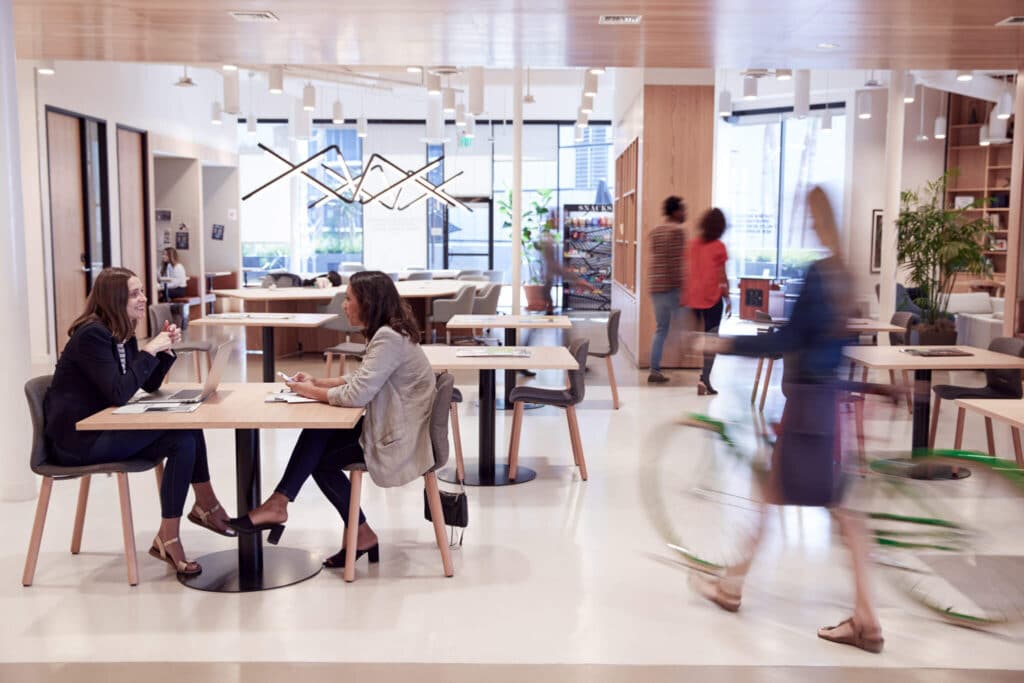
Adaptive workplace trends to adopt in 2023 and beyond
As tech continues to unfold, AI takes centre stage, and the nature of work evolves around us, adaptive workplaces will undergo further, game-changing transformations.
As we look towards a more sustainable lifestyle at work and at home, here are some emerging trends to watch out for:
Hybrid work models
The rise of remote and hybrid work models will shape the future of adaptive workplaces.
Australian organisations, like those around the globe, will need to create seamless experiences that cater to both in-person and remote collaboration, ensuring equal opportunities for all employees.
Wellness and well-being focus
Adaptive workplaces will increasingly prioritise employee wellness and well-being, not just because new generations of employees increasingly demand it, but because happy employees are more innovative, creative, and productive.
This includes incorporating elements such as natural lighting from skylights and glass walls, indoor plants, ergonomic furniture, and spaces for relaxation and rejuvenation.
Sustainability and green initiatives
Sustainability is actually not so much a trend as it is a necessity, as you well know. Organisations will increasingly integrate sustainability into their adaptive workplace strategies, not just to remain compliant with regulations and best practices, but because it’s the right thing to do.
From energy-efficient building designs, solar power, and waste reduction programs, to the selection of furnishings and textiles that are ethically sourced, workplaces will play a vital role in promoting environmental responsibility.
AI and automation integration
Artificial intelligence and automation will be integrated into adaptive workplaces to streamline processes, enhance productivity, and optimise resource allocation. This technology will enable employees to focus on higher-value tasks while repetitive and mundane tasks are automated.
It’ll be interesting to see, during the next five to ten years, what drastic changes this will make to the way we design our spaces, and the technologies and resources we prioritise.
Data-driven workplace design
Leveraging data and analytics, organisations will increasingly rely on gathering insights on employee preferences, space utilisation, and productivity through IoT devices and workplace sensors.
This data-driven approach will influence workplace design decisions and enable organisations to create tailored and optimised environments that adapt in real-time response to worker trends.

CONCLUSION
The future of Australian organisations rests on their willingness to embrace change through adaptive workplaces, and considerations that prioritise sustainability and employee health.
By creating flexible, collaborative, and employee-centric environments, companies like yours can unlock rich and rewarding benefits, including enhanced productivity, talent attraction and retention, cost efficiency, innovation, and resilience.
As the workplace continues to evolve, let’s focus on the future, because data collected over the past 4 years has all but proved that adaptive workplaces with flexible scheduling are not a trend, they’re here to stay.
At Bowen Interiors, we specialise in customising this necessary journey to your and your employees’ needs. We’ve seen hundred of businesses go from traditional cookie-cutter cubicles to thriving and stylish, adaptive ecosystems, and we’d love to do the same for you.
Every business is different, but we have the scope and versatility to develop a uniquely adaptable, sustainable workplace profile that suits your company culture and vision. Contact us today for a free 30-minute consultation with one of our talented adaptive workplace design experts.


